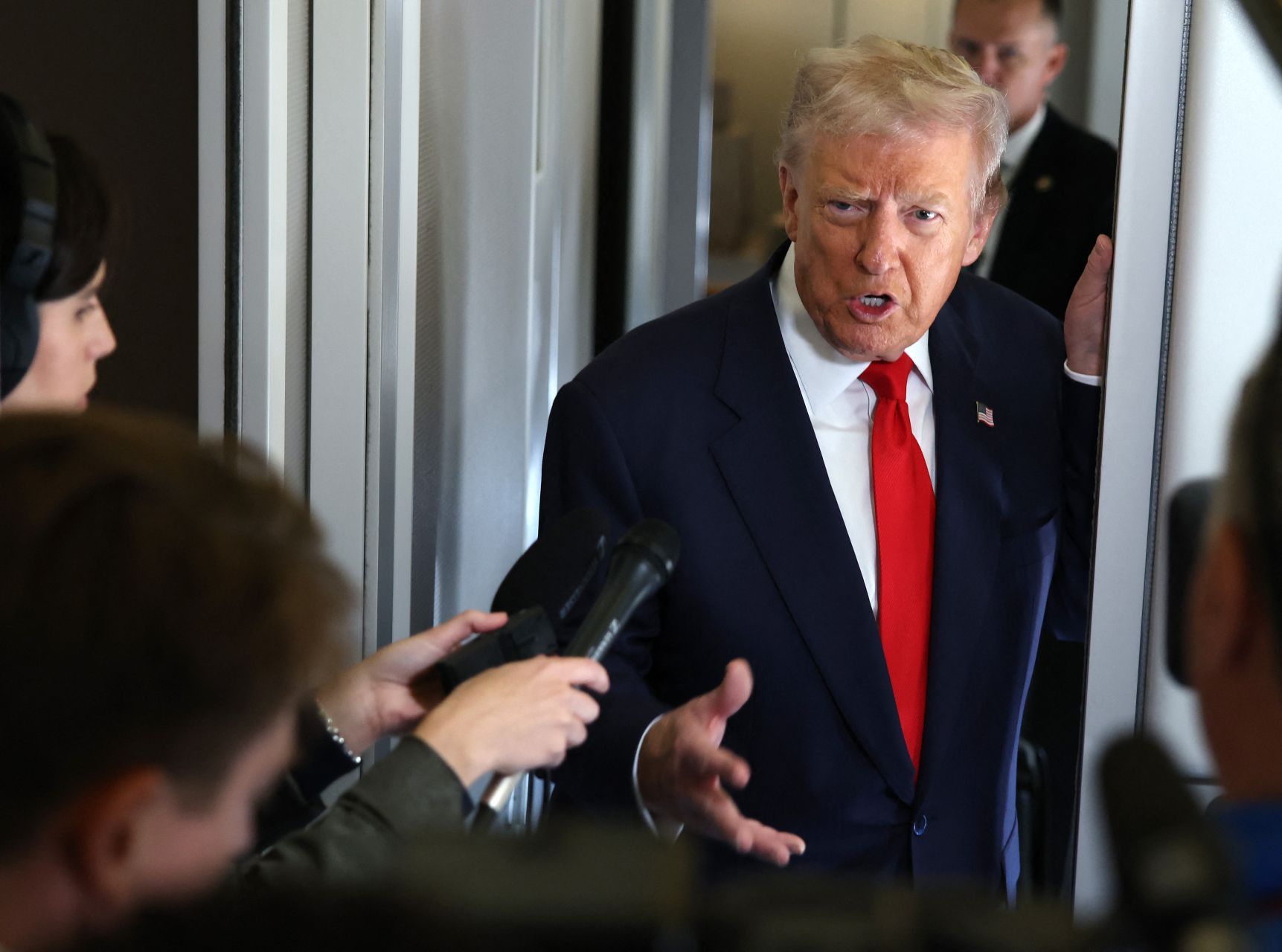- Home
- Middle East
- Trump Awakens Old Nuclear Testing Fears

U.S. President Donald Trump speaks to members of the media on board Air Force One on October 31, 2025 at Joint Base Andrews, Maryland. ©Samuel Corum / GETTY IMAGES NORTH AMERICA / Getty Images via AFP
Despite deliberately vague statements about resuming nuclear weapons testing, U.S. President Donald Trump is raising the specter of renewed nuclear proliferation, with China potentially the main beneficiary, according to experts.
This comes at a time when the international arms control framework is already fragile.
“We are already in the midst of a three-way arms race between Russia, the U.S., and China,” said William Hartung of the Quincy Institute, an American think tank.
“Resuming nuclear tests would worsen this unstable situation, if not make it far more dangerous,” he added via email.
Trump surprised the world by announcing, just hours before his Thursday meeting with Chinese President Xi Jinping in South Korea, his intention to resume nuclear tests, citing other countries’ “testing programs” as justification.
Beijing immediately urged Washington to “seriously” honor its obligations under the Comprehensive Nuclear-Test-Ban Treaty (CTBT) and take “concrete steps to preserve the global nuclear disarmament and non-proliferation system.”
Moscow, which recently tested a nuclear-powered cruise missile and torpedo, stressed these were tests of nuclear-capable weapons, not actual nuclear detonations.
China on Alert
However, the U.S. announcement “could trigger a chain reaction of nuclear testing by U.S. adversaries and shatter the Nuclear Non-Proliferation Treaty,” warned Daryl Kimball, executive director of the Arms Control Association (ACA).
Doreen Horschig of the Center for Strategic and International Studies (CSIS) told AFP that the main beneficiary would be China, “because they are not as advanced as Russia and the U.S.”
Experts note China is rapidly expanding its nuclear arsenal but remains far from parity with the U.S. or Russia, the two main nuclear powers. The Pentagon warned last year that China is progressing faster than expected, especially in operational warhead development.
As of May 2023, China had over 500 operational nuclear warheads, expected to double by 2030, according to Washington. The Stockholm International Peace Research Institute (SIPRI) cites 600 deployed and stored warheads.
“A Good Idea”
Arms control seems increasingly sidelined.
The last disarmament agreement between Washington and Moscow, the New START treaty, expires in February 2026. It limits each side to 1,550 deployed strategic warheads and includes verification mechanisms, suspended for two years due to the war in Ukraine.
Moscow proposed a one-year extension without mentioning arsenal inspections. In early October, Trump called it “a good idea,” though the U.S. government has not yet indicated its plans.
In July, the Republican leader said the U.S. was “starting to work on it,” adding that “removing nuclear limits is a major problem for the entire world.”
The U.S. also withdrew in 2019 from a major 1987 intermediate-range nuclear forces (INF) treaty with Russia.
No major power has conducted official nuclear tests in three decades—except North Korea, which tested six times between 2006 and 2017. However, many countries, led by the U.S., regularly test delivery systems—missiles, submarines, fighter jets, and others.
According to Horschig, “everything is now done through testing and computer simulations.”
“The U.S. is far ahead of Russia and China in this area, so they don’t really need to resume nuclear testing,” she said, though she warned of potential escalation. “That’s the big risk right now.”
AFP
Read more




Comments